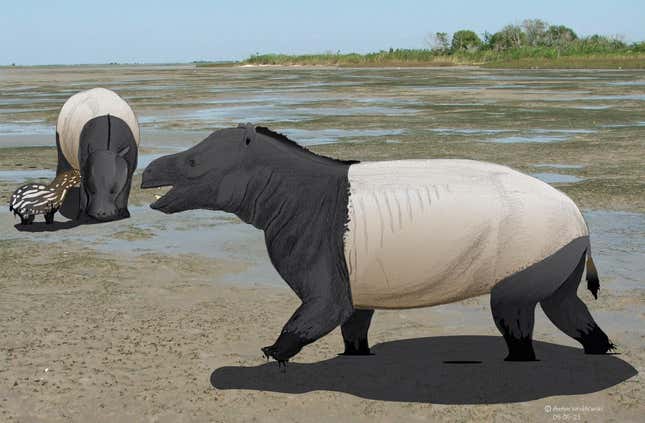
For years, paleontologists and paleobotanists have spent time on Wyoming’s Hanna Formation, a 58-million-year-old zone of rock in the southern part of the state that contains a wealth of fossils of marine fauna like ammonites and various forms of ancient plant life. In 2019, though, Anton Wroblewski stumbled across something new: a massive exposed trackway spanning thousands of years, marking a seaside destination for many ancient mammals in the Paleocene.
“The angle of the light was just right on the surface of the rock that I could see these impressions that were at very regular intervals and went for dozens and dozens of meters,” said Wroblewski, an ichnologist—someone who studies trace fossils—at the University of Utah. “I looked at them and said ‘holy cow, those are footprints.’”

An analysis of the trackways is published today in Scientific Reports. Following the tracks down their length, Wroblewski found they ran nearly 3,500 feet along the sandstone escarpment, about a third longer than the Burj Khalifa is tall. The tracks were splotches roughly 10 inches wide, suggesting they belonged to animals about the size of bears. The footprints were found amid trace fossils of bivalves and polychaetes (marine worms), confirming the lumbering mammals were by the seaside. These prints were left as the animals made their way across the muddy bank of the lagoon or bay that occupied the region. It’s the oldest example of large mammals taking by a marine environment.
Sixty million years ago, Earth was a boomtown for mammals. The dinosaurs were gone, leaving furry animals with the space and safety to grow bigger and proliferate. One of the places the warm-blooded creatures set up shop was what became the Hanna Formation. For millions of years, the western United States was occupied by a vast inland sea, inhabited by a vast diversity of creatures. There’s some debate as to when that Western Interior Seaway retreated, but it’s clear that some marine water was still sitting in what is today Wyoming when these mammals chose to walk through it.
As to the identity of the trackmakers, there were actually two. It’s hard to parse the (relatively) small timescales between them, but the prints were made tens of thousands of years apart. One type was probably made by a hippo-like ungulate called Coryphodon, by Wroblewski’s assessment, based on the size and shape of the five-toed print. The other mammal species was also an even-toed ungulate—an “artiodactyl,” the same order that includes bison, giraffe, and cows, among other modern mammals—but its identity is less certain. Those trackways only had four toes, which paleontologists don’t find in the fossil record until a few million years after the trace fossils in Wyoming formed.

“The molecular data suggests that these four-toed animals evolved in the Cretaceous [145 to 66 million years ago], but the body fossils say they didn’t show up until the Eocene [56 to 33.9 million years ago],” Wroblewski said. “Well now, I’ve got trace fossil evidence of something with four toes that looks like an artiodactyl or maybe a tapiroid, right in between those two age dates.”
Scientists have to make a lot of assumptions about the history of life, since only a tiny fraction of the plants and animals that have lived on Earth actually left behind a fossil. When something like these footprints comes along and shows that certain guesses were correct, well, that’s got to be satisfying.